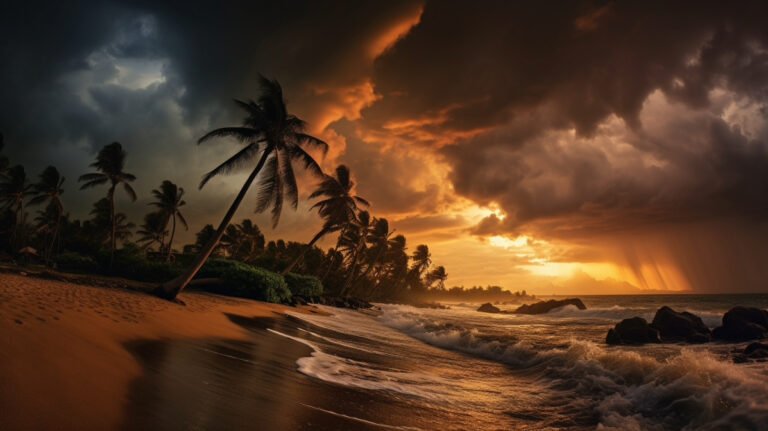Unraveling Maui Language: Embrace the Heart of Hawaiian Culture 💬
Maui Language, also known as the Hawaiian language, is an indigenous language of Maui that plays an integral role in Hawaiian culture. As one of the few surviving Polynesian languages, Maui Language offers a unique insight into the cultural traditions and practices of the region, making it an essential element of the Hawaiian heritage.
Learning Maui Language can help individuals gain a deeper appreciation for the local culture, fostering connections with the community and enhancing their travel experiences in Hawaii. In this article, we will explore the historical and cultural significance of Maui Language, as well as the resources available for those interested in learning and preserving this ancient language.
Key Takeaways:
- Maui Language is an indigenous language of Maui and an integral part of Hawaiian culture.
- Learning Maui Language can help individuals gain a deeper understanding of the local culture and traditions.
- Maui Language provides a unique insight into the linguistic heritage of the region, making it an essential element of the Hawaiian heritage.
Uncovering the History and Traditions of Maui Language
The Maui Language, also known as the Hawaiian dialect, is an indigenous language of Maui that has been spoken for centuries. The language is an integral part of the region’s cultural heritage, with unique linguistic characteristics and variations within the dialect.
The origins of Maui Language can be traced back to Polynesian explorers who settled in the region over a thousand years ago. Over time, the language developed and grew, with different variations emerging across the different islands of Hawaii.
Today, Maui Language plays a critical role in storytelling, cultural rituals, and social interactions. The language is used to communicate values, beliefs, and traditions that are deeply rooted in the region’s history and cultural identity.
Maui Linguistic Heritage
The Maui dialect of Hawaiian language has its own unique linguistic heritage. There are several variations of the dialect within Maui, each with its own distinct features. These variations can be seen in the pronunciation of words and sentence structures, as well as in the vocabulary used to describe specific cultural practices and traditions.
One example of this is the use of “nānā” in the Maui dialect, which translates to “look” or “see.” In other dialects of Hawaiian, the equivalent term is “hoʻolōkahi.” This demonstrates the specific linguistic variations that exist within the Maui dialect, highlighting its unique linguistic heritage.
Cultural Traditions and Practices
The Maui Language is deeply integrated into the region’s cultural traditions and practices. The language is used in storytelling and chant, which are important cultural practices that have been passed down through generations. These traditions reflect the region’s history, values, and beliefs, and connect the people to their cultural identity.
The language is also used in cultural rituals, such as the traditional Hawaiian wedding ceremony. In these ceremonies, the language is used to communicate important values and beliefs, and to connect the individuals involved to the history and identity of the region.
“The Maui Language is deeply integrated into the region’s cultural traditions and practices”
Overall, the Maui Language is a critical component of the region’s cultural heritage. Its unique linguistic heritage and cultural traditions provides insights into the history and identity of Maui, connecting individuals to the heart and soul of the region.
Learning Maui Language: Embrace the Indigenous Tongue of Maui
If you are interested in learning the native language of Maui, there are various opportunities available for both local residents and visitors. It is vital to understand the importance of language revitalization efforts as a means of preserving the indigenous language of Maui.
There are many resources available for individuals interested in gaining fluency in Maui Language. One option is to take language classes provided by community organizations or local schools. These courses offer a comprehensive introduction to the grammar, syntax, and vocabulary of Maui Language.
Additionally, for a more immersive experience, there are language immersion programs that offer an opportunity to practice speaking and listening skills in a natural setting. These programs provide a unique opportunity to understand the cultural and historical heritage of Maui while learning its native language.
Learning Maui Language allows for a deeper understanding of the local culture and fosters connections with the community. For visitors, it offers a chance to explore and experience the beauty of Maui Language during their stay in Hawaii.
Take the first step in embracing the indigenous tongue of Maui and experience the beautiful world of Maui Language.
Maui Language Preservation: Honoring the Heritage of Maui
Preserving the Maui language, also known as the Hawaiian dialect of the indigenous language of Maui, is of utmost importance to the local community. Despite the efforts to maintain the language and the traditions associated with it, Maui Language is at risk of disappearing.
One of the challenges faced in the preservation of Maui Language is the lack of access to resources. Many records and documents related to the language and its usage have been lost over time. To overcome this obstacle, language preservation initiatives have been launched to document and record the language’s morphology, syntax, and lexicon. The resulting resources can be used to teach Maui Language to new generations.
| Maui Language Preservation Initiatives | Description |
|---|---|
| Ka Haka ʻUla O Keʻelikōlani College of Hawaiian Language at the University of Hawaii | A higher education institution that offers Bachelor’s, Master’s, and even PhD programs in Hawaiian and Indigenous language and culture. |
| Aha Punana Leo | A non-profit organization that manages language preschools for Hawaiian and Indigenous languages that immerse students in the language daily. |
| Hawaiian Language Newspaper | The Hawaiian language newspaper called “Ka Wai Ola o OHA” is run by the Office of Hawaiian Affairs and provides written content in Hawaiian and English. |
The above initiatives have made significant strides in preserving the Maui language. Additionally, there are cultural events that promote and celebrate the language and its traditions, such as religious ceremonies, music festivals, and museum exhibitions that showcase Maui Language artifacts.
Preserving Maui Language is not just about language preservation but also preserving the cultural heritage of Maui. The language is an integral part of Maui’s identity, and language preservation strengthens the connection between the Maui community and the language, which has played a vital role in shaping Maui’s cultural history.
Preserving the Maui language is a collaborative effort between the community, the government, and educational institutions. It is through these initiatives that the Maui people can ensure the continued preservation of their language, traditions, and ultimately, their identity.
Conclusion: Embracing Maui Language to Connect with Hawaii’s Cultural Heart.
In conclusion, embracing Maui’s indigenous language is key to connecting with Hawaii’s cultural essence. Learning unique traditions and expressions passed down generations fosters deep appreciation and community bonds.
Honor Maui’s heritage by taking time to understand the local language. Gain profound insight into the region’s vibrant culture. Help ensure treasured customs thrive into the future.







